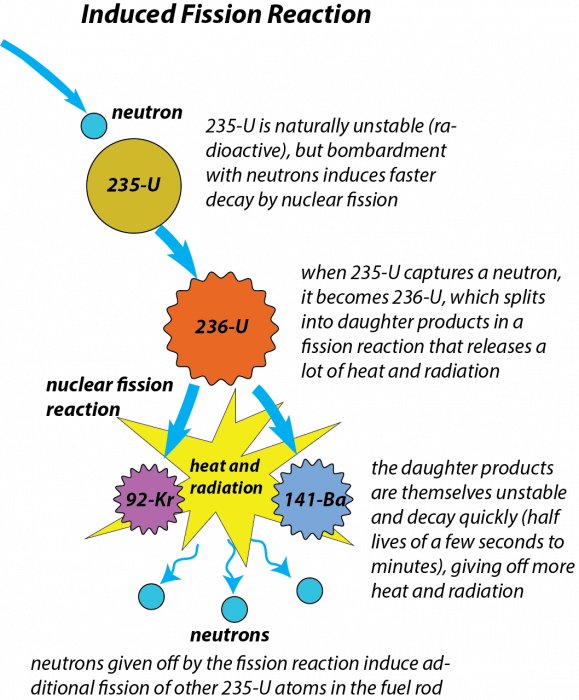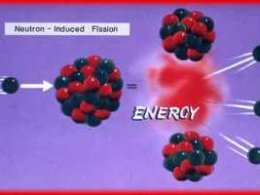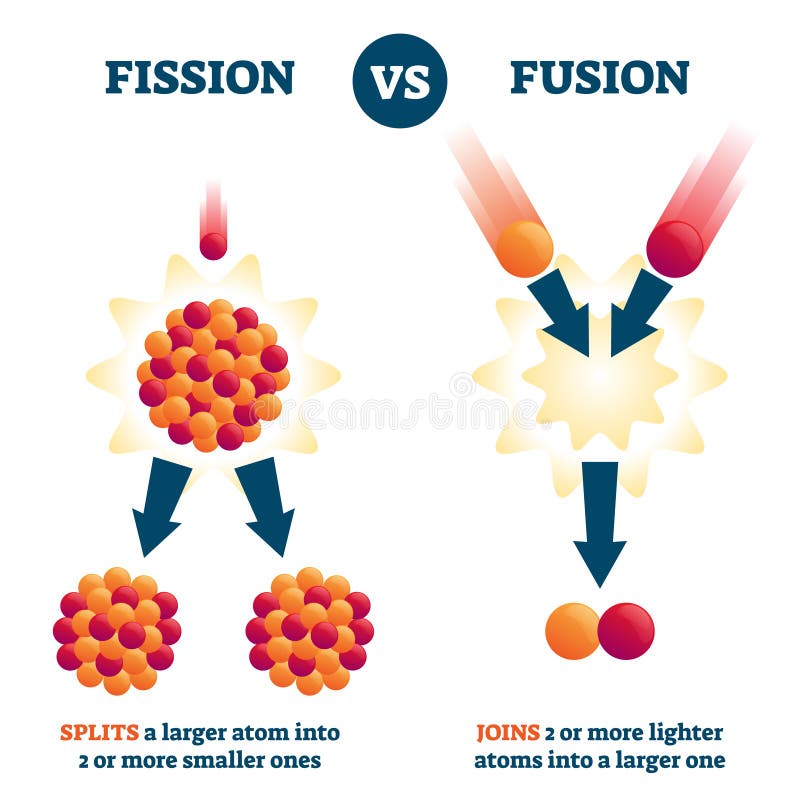

The atom bombs based on nuclear fission of uranium-235 ad plutonium-239 were dropped on the Japanese cities of Hiroshima and Nagasaki in 1945 during the Second World War. The fission reaction is deliberately allowed to go out of control so as to produce a large amount of energy in a very short while.
Fission reaction example generator#
This generator helps in generating electricity.Ī nuclear bomb is based on the nuclear fission reaction of uranium-235 and plutonium-239. So, when the turbine rotates, its shaft also rotates and drives the generator. This steam then rotates the turbine which is further attached to its shaft and the generator. This steam is then passed at high pressure into the turbine chamber having a turbine. Water absorbs heat from hot sodium and boils to form steam. Then through pipes extremely hot sodium is passed through water in the heat exchanger. Sodium helps in absorbing the heat produced in the reactor. That is why liquid sodium is pumped continuously through the pipes attached to the reactor. The steam produced is used to turn turbines and run generators.Ī tremendous amount of heat energy is produced when a controlled fission reaction takes place in a nuclear reactor. Here with the help of coolant water is converted into steam. Now the heat produced due to the fission reaction in the reactor is cooled by using liquid sodium or carbon dioxide gas which also helps it transfer to the heat exchanger. The nuclear reactor is enclosed in a concrete chamber that has a thick wall so that it can absorb the nuclear radiations.Ī Nuclear power plant or Atomic power plant The nuclear rods can be raised inside or pulled outside the reactor as the demand is.

In between the uranium-235 rods are placed boron rods as they help in absorbing excess neutrons and prevent nuclear fission reaction from out of control. Graphite is called the moderator as it helps in slowing down the speed of neutrons so that a proper fission reaction takes place. In a nuclear reactor, uranium-235 rods are inserted in a graphite core. In a nuclear power plant, a fission reaction is carried out in a steel pressure vessel, and inside is a nuclear reactor. Nuclear power plants use nuclear fission reactions to generate electricity and the fuel used for this purpose is uranium-235. Nuclear fission reactions are done to generate electricity at nuclear power plants. However, nuclear fission reaction can be controlled by using boron rods as boron can absorb neutrons.

If all the neutrons produced during the fission of uranium-235 produce further fission, then so much energy will be produced that it will not be controlled and leads to an explosion called an atom bomb. The neutrons produced in the nuclear fission reaction leads to further fission of heavy nuclei and cause a chain reaction. Also, in a nuclear fission reaction neutrons are used up and produced as well.


 0 kommentar(er)
0 kommentar(er)
